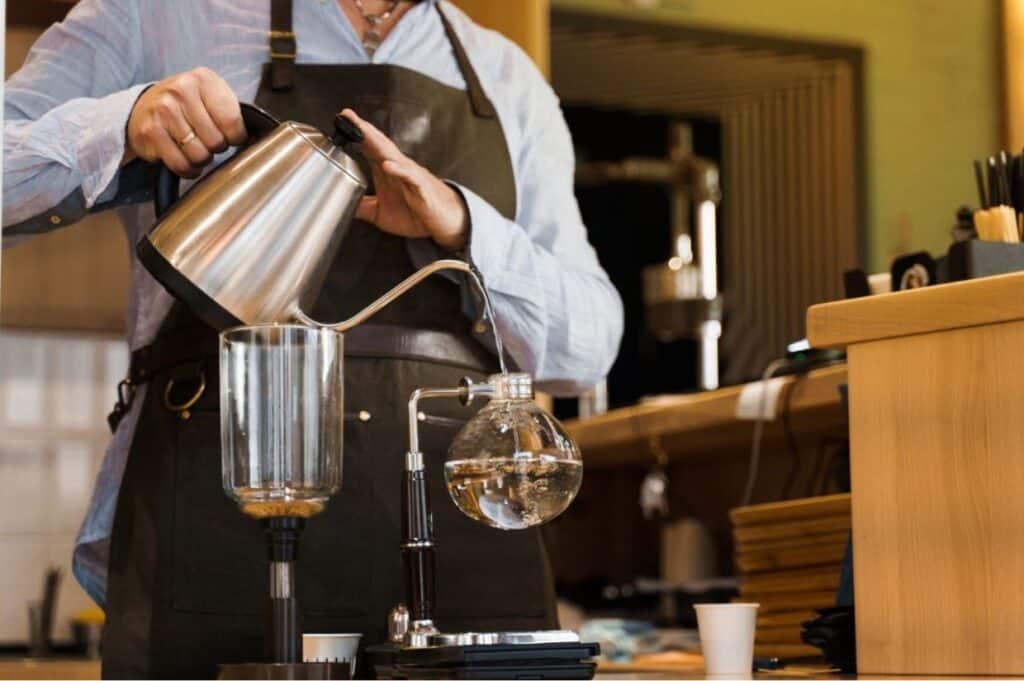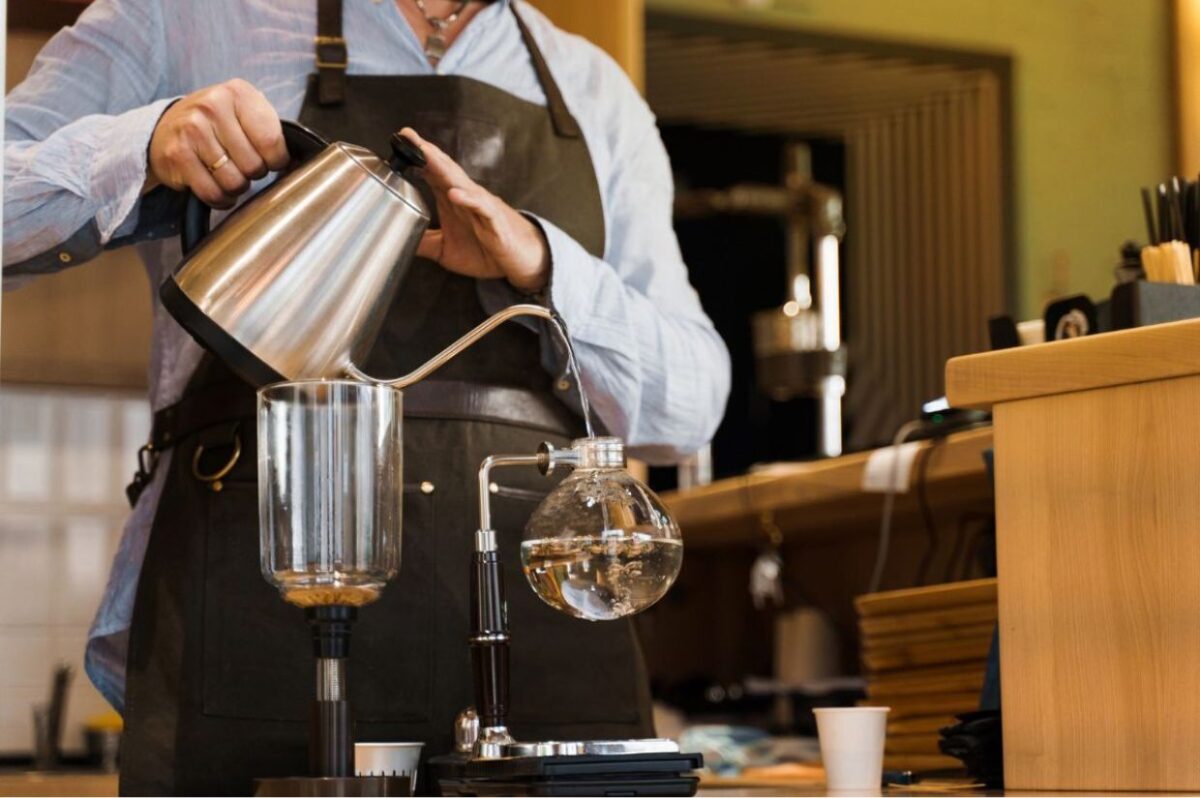Honoring the art behind the brew on International Coffee Day
As the world awakens to the aroma of freshly brewed coffee on Oct. 1, International Coffee Day is a global toast to one of our most beloved beverages. Established in March 2014 by the International Coffee Organization, this annual event celebrates not just the drink itself, but the intricate artistry and human effort that transform humble beans into a daily ritual for billions.

International Coffee Day is an opportunity to appreciate the craft, culture and science of coffee preparation. From slow-pour rituals to high-pressure extractions, the variety of brewing methods reflects not only differences in flavor but also centuries of cultural tradition and innovation.
The French press: Simplicity meets full-bodied flavor
For many, the French press is preferred for home brewing when going beyond drip machines. Originating in France in the mid-19th century, this method uses a cylindrical glass or stainless steel carafe and a plunger with a metal filter. Ground coffee steeps in hot water for about four minutes before the plunger is pressed down, separating the grounds from the liquid.
The result is a rich, full-bodied cup, as the metal filter allows more of the coffee’s natural oils and fine particles to remain. “I keep two French presses in my kitchen, a four-cup for sharing and a single-serve for a solo cup. Using a press is simple, no electricity is needed and I decide how long to brew the coffee,” says Jere’ Cassidy of One Hot Oven. “The flavor is always rich, smooth.”
Pour-over: Precision in every drop
In contrast to the immersion style of the French press, pour-over brewing relies on gravity and precision. Popularized globally by Japanese brands such as Hario and Kalita, this method involves slowly pouring hot water over coffee grounds in a conical filter, allowing it to drip through into a vessel below.
The technique emphasizes clarity of flavor and aroma, making it a favorite for single-origin beans where subtle tasting notes shine. “A pour-over is one of my favorite things to take camping,” says Amanda Luhn of Knoxville Backyard & Beyond. “It doesn’t require much equipment and it smells so good. Pour it straight into your insulated mug and it stays hot on a cold mountain morning.”
Espresso: The heart of coffee culture
Few brewing styles have shaped global coffee culture as much as espresso. Developed in Italy in the early 20th century, the method forces hot water through finely ground coffee at high pressure, producing a concentrated shot topped with a layer of crema.
Espresso is the foundation of countless drinks like lattes, cappuccinos, macchiatos and the Americano. “I make espresso every day and love being able to make espresso drinks at home instead of going to the coffee shop. It’s quick and easy to make, and I love the bold flavor,” said Lisa Wells of Cook Eat Well. “I have a small espresso machine that doesn’t take up too much room on the counter, and my regular coffee machine is now collecting dust in a closet.”
Cold brew: Patience rewards the palate
In the last decade, cold brew has moved from niche specialty shops to mainstream grocery shelves. The method, believed to have roots in Japan’s Kyoto-style slow-drip coffee, steeps coarse grounds in cold water for 12 to 24 hours.
The extended brewing time results in a smooth, low-acid beverage that can be served over ice or diluted with water or milk. “Cold brew is my go-to coffee when I’m entertaining. It has a crisp, smooth flavor that feels special, and it’s always a conversation starter since so many guests haven’t tried it before,“ noted Jessica Haggard of Quick Prep Recipes. “Best of all, it’s effortless to scale a big batch, so I can have plenty ready for a crowd.”
Moka pot: A stove-top tradition
The Moka pot, a fixture in Italian households since the 1930s, offers a strong, espresso-like coffee without the need for a bulky machine. Designed by Alfonso Bialetti, the octagonal aluminum pot uses steam pressure from boiling water in the lower chamber to push water up through coffee grounds into the top chamber.
Its bold flavor and compact size have made it a favorite for home kitchens and travel. “Brewing with a Moka pot feels like keeping a piece of my heritage alive,” says Bella Bucchiotti at xoxoBella. “I can close my eyes and picture my Nonna at the stove, the air thick with the smell of fresh coffee. It is comfort, memory and tradition all in one small pot.”
Turkish coffee: History in a cup
One of the oldest known brewing methods, Turkish coffee dates back to the Ottoman Empire in the 16th century. Finely ground coffee is simmered with water and optional sugar in a small copper pot called a cezve until foam forms on the top. Then it’s poured, grounds and all, into a small cup.
This method produces a thick, intense brew often enjoyed slowly, sometimes with cardamom for added spice. In some regions, reading the patterns of the coffee grounds left in the cup is part of the experience. “In my experience, there’s really no one way to brew a Turkish coffee,” explains drink expert Brodie Vissers. “Even though many will tell you theirs is the right way.”
Siphon brewing: Theatrical and technical
Part chemistry experiment, part brewing method, siphon coffee dates back to the 1830s. Using two glass chambers connected by a tube, heat in the lower vessel forces water up into the upper chamber, where it mixes with coffee grounds. When the heat source is removed, gravity pulls the brewed coffee back down through a filter.
Siphon brewing yields a clean yet full-bodied cup, and the process is visually captivating. “The whole process is a pleasing application of physics and is often likened to a classroom experiment,” said coffee expert James Hoffman. ”Unfortunately, it is sufficiently difficult to get right that most people try a couple of times and then give up, which is a shame.”
Brewing beyond borders
Each brewing method reflects a blend of local resources, technology and tradition. While coffee is grown in a belt of countries along the equator, its preparation is truly global. A single bean might be roasted in Brooklyn, brewed in Paris and sipped in Tokyo, where each step adds its own layer of culture and craft.
International Coffee Day celebrates this interconnectedness, highlighting farmers and roasters as well as the baristas and home brewers who shape the way we experience coffee. The occasion offers more than just a reason to indulge in an extra cup with a cream cheese danish. The day also underscores sustainability concerns, with many organizations using the occasion to promote fair trade practices, climate-resilient farming and waste reduction in coffee production.
Choosing your brew
For those looking to experiment, it’s best to start with fresh, quality beans and clean water, regardless of the method. From there, adjusting the grind size, water temperature and brew time can help fine-tune results. The beauty is that you don’t need to master every method. Just try a few and see what speaks to your taste and lifestyle.
In the end, the best brew may not be the most technically perfect one, but the one that turns a morning into a moment or a conversation into a memory. On International Coffee Day, perhaps the truest celebration is not just in the cup, but in the craft behind it.
Lisa MarcAurele is the original founder of Low Carb Yum and the author of two keto cookbooks. She created Little Bit Recipes to help people save money by minimizing leftovers when cooking for one or two people. Lisa is a long-time resident of Connecticut and enjoys hiking and taking scenic day trips around New England.


